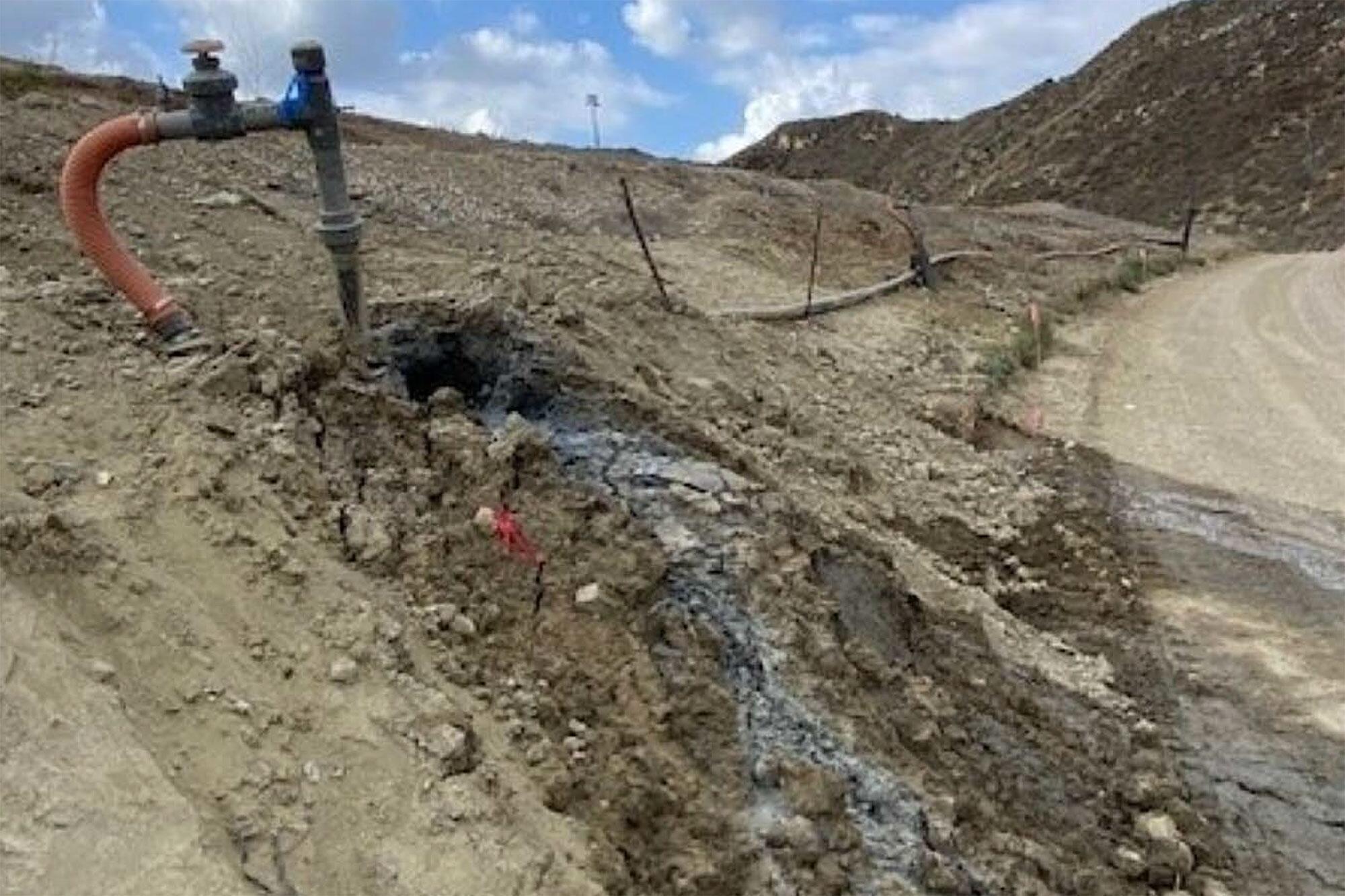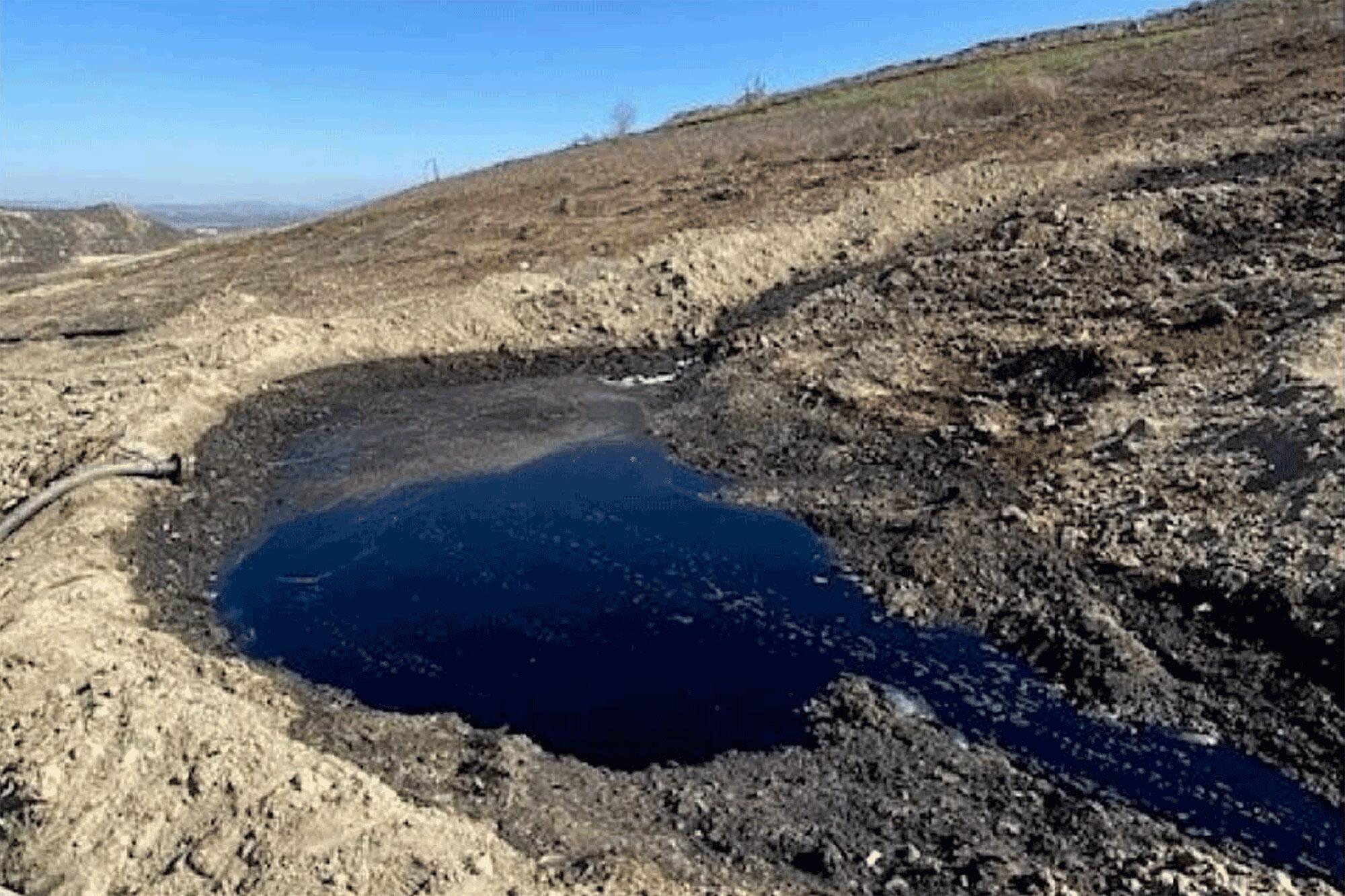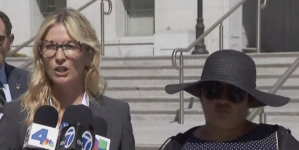-
Austin FC's Gyasi Zardes finds the back of the net in 45' to take a 2-0 lead over Pumas - 11 mins ago
-
Gulyas: Ukraine ‘blackmailing’ countries in favour of peace talks - 27 mins ago
-
How to Watch Men’s Tennis at the 2024 Paris Olympics: Streams, Schedule - 37 mins ago
-
Photos: Paris is the backdrop for a colorful Olympics opening ceremony - 47 mins ago
-
Jordan Love, Packers reportedly agree to 4-year, $220 million extension - 53 mins ago
-
A pivotal election looms over Venezuela as fear for free and fair polls grows - 58 mins ago
-
NASCAR News: This Is Where Corey LaJoie Could Go After Spire Motorsports Exit - about 1 hour ago
-
Violent demonstration outside L.A. synagogue sparks second lawsuit - about 1 hour ago
-
J.D. Martinez CRUSHES a grand slam to give Mets a 4-2 lead over Braves | MLB on FOX - 2 hours ago
-
Donald Trump’s Protester Comments Raise Key Issues - 2 hours ago
Chiquita Canyon landfill fire may pose short-term health risks but no cancer threat, report says
As a massive underground garbage fire continues to spread sickening odors and noxious fumes over Castaic area neighborhoods, Los Angeles County Supervisor Kathryn Barger has called on Chiquita Canyon Landfill owners to relocate affected residents until the issue is resolved.
In a letter to John Perkey, Waste Connections vice president and deputy general counsel, Barger urged the company to take immediate steps to address the odor issues and provide relocation assistance to community members who request it.
Aggressive and impactful reporting on climate change, the environment, health and science.
“It has become increasingly clear to me that there is no predictable end in sight,” Barger wrote. “As you continue working to comply with oversight and odor abatement requirements, the very real and significant impacts to those living near the Landfill must be addressed.”
In a statement, Chiquita Canyon said it plans to discuss its odor mitigation efforts and Barger’s request at a community meeting on Feb. 13 at Castaic Library.
“We are reviewing the recommendations made by Supervisor Barger and how they can be implemented as part of the overall strategy. We will have more to report on this and other mitigation updates at next week’s Community Advisory Committee meeting.”
Barger’s call to action follows the release of a county-ordered health study that determined toxic fumes escaping from Chiquita Canyon Landfill might result in short-term health effects but did not pose a significant long-term threat of cancer.
The findings, which were released at a public meeting Wednesday in Santa Clarita, were met with outrage from some community members, who said the report downplayed the significance of the problem.
“I’m sick of being sick,” said Abigail DeSesa, a Val Verde resident, who has complained of difficulty breathing and disorientation due to the odors. “These symptoms may not give me cancer, but they have stolen my life. And they’re stealing all of these people’s lives. That’s not short-term.”
Barger wrote that despite the study’s health finding, residents should not be expected to live under such circumstances and deserved relief.
“While the study concluded that odor exposure does not increase chances of long-term disease, it is undeniable that the community is suffering,” Barger wrote. “My constituents are consistently voicing how their overall quality of life has been negatively impacted ever since this odor incident started, which is now well over eight months.”

Liquid waste that inspectors have noted oozing from Chiquita Canyon Landfill has been found to contain elevated levels of toxic chemicals.
(South Coast Air Quality Management District)
At Barger’s direction, the Los Angeles Department of Public Health hired environmental consulting firm Roux Associates to examine concentrations of harmful gases near the landfill, where a chemical reaction has been generating heat and high pressure for roughly a year.
After collecting more than 200 air samples over six weeks, environmental investigators concluded that Chiquita Canyon might produce a “small incremental amount” of cancer-causing benzene, but local levels remain lower than in many other parts of Los Angeles County.
The health assessment acknowledged, however, that residents had been exposed to intermittent odors from sulfur compounds. That pollution probably has resulted in some short-term health effects, including difficulty breathing and heart palpitations, the report said.
In a series of tense exchanges with public health officials, residents said they were struggling to reconcile the assessment’s findings with their own lived experience. The firm’s air quality data also appeared to contradict Chiquita Canyon’s community air monitoring, which showed large spikes in benzene and sulfur in the area over the same period.
In the last year, the landfill’s air monitoring stations have reported thousands of hourly readings of smelly hydrogen sulfide in excess of the state’s short-term exposure limit, including several that were more than 10 times above that threshold. The local air district recently ordered the landfill to publish real-time air quality data from two of these community air monitoring stations to help better inform residents.
“I’d love to just buy into it and say, ‘You know what? This looks like great news,’” said one Castaic resident. “The problem I have is that I’m not convinced that the time frame and the sampling and the accuracy is there.”
The skepticism of some residents only increased when they were told of unexpected interruptions with data collection, including the theft of three metal canisters that were used to collect air samples.
From Oct. 31 to Dec. 16, the consultants gathered samples with metal canisters and plastic bags in parts of Val Verde and Castaic. The highest concentration of benzene was 1.8 parts per billion. But the average level, which was 0.6 parts per billion, is on par with other communities across Los Angeles County, including Burbank.
“So all of these people in L.A. are suffering worse than we are?” one longtime resident asked. “I hate to say it — you’re probably way more educated than me — but your logic doesn’t make any sense. We shouldn’t worry about the benzene because … we don’t have it as bad as the rest of L.A. County?”
Roux investigators also evaluated air samples collected by SCS Engineering, the landfill’s consultant. During the same time frame, SCS air monitoring found average benzene concentrations of 6 parts per billion, according to the county health assessment.
The highest daily benzene reading was 222 parts per billion, which was detected on Nov. 6 at an air monitor in Hasley Canyon Park, which sits next to Live Oak Elementary School. The state health standard for short-term exposure to benzene is 8 parts per billion.
“A single day of elevated benzene at the levels reported is not an acute issue and appears to be an outlier compared to the data Roux collected,” Adam Love, an environmental scientist and vice president of Roux Associates said in a statement to The Times.
Long-term exposure to benzene, an air contaminant found in cigarette smoke, has been linked to cancer. High levels of exposure, even for a short time, can irritate the lungs, induce dizzy spells and cause headaches.

Puddles of tainted water have accumulated on the surface of Chiquita Canyon Landfill as a chemical reaction has caused high heat and pressure to build within the dump.
(South Coast Air Quality Management District)
After hearing the study results at the public meeting, some residents renewed the calls to shut down the landfill.
“I do not feel confident hearing that your tests are all over the place and not matching up with some obvious things,” said DeSesa, the longtime Val Verde resident.
Meanwhile, Chiquita Canyon Landfill operators are working to resolve the issues by flaring toxic landfill gases and extracting wastewater, which they believe is contributing to odors. Crews have been working to install a sprawling cover designed to suppress odors in the affected portion of the landfill.
This month, workers were also continuing to install temperature monitors that would help the U.S. Environmental Protection Agency and other regulators track whether the underground fire was expanding.
However, record rainfall has delayed this work, which won’t resume until the site dries enough to allow the use of heavy equipment.
But some residents have grown impatient.
“You’re not here to live it and smell the smell,” one Castaic woman said.
“I’d like these people to give me portable oxygen,” she continued. “It’s in my curtains. It’s in my bedding. I live facing Magic Mountain. It comes fuming in my house.”
Source link































